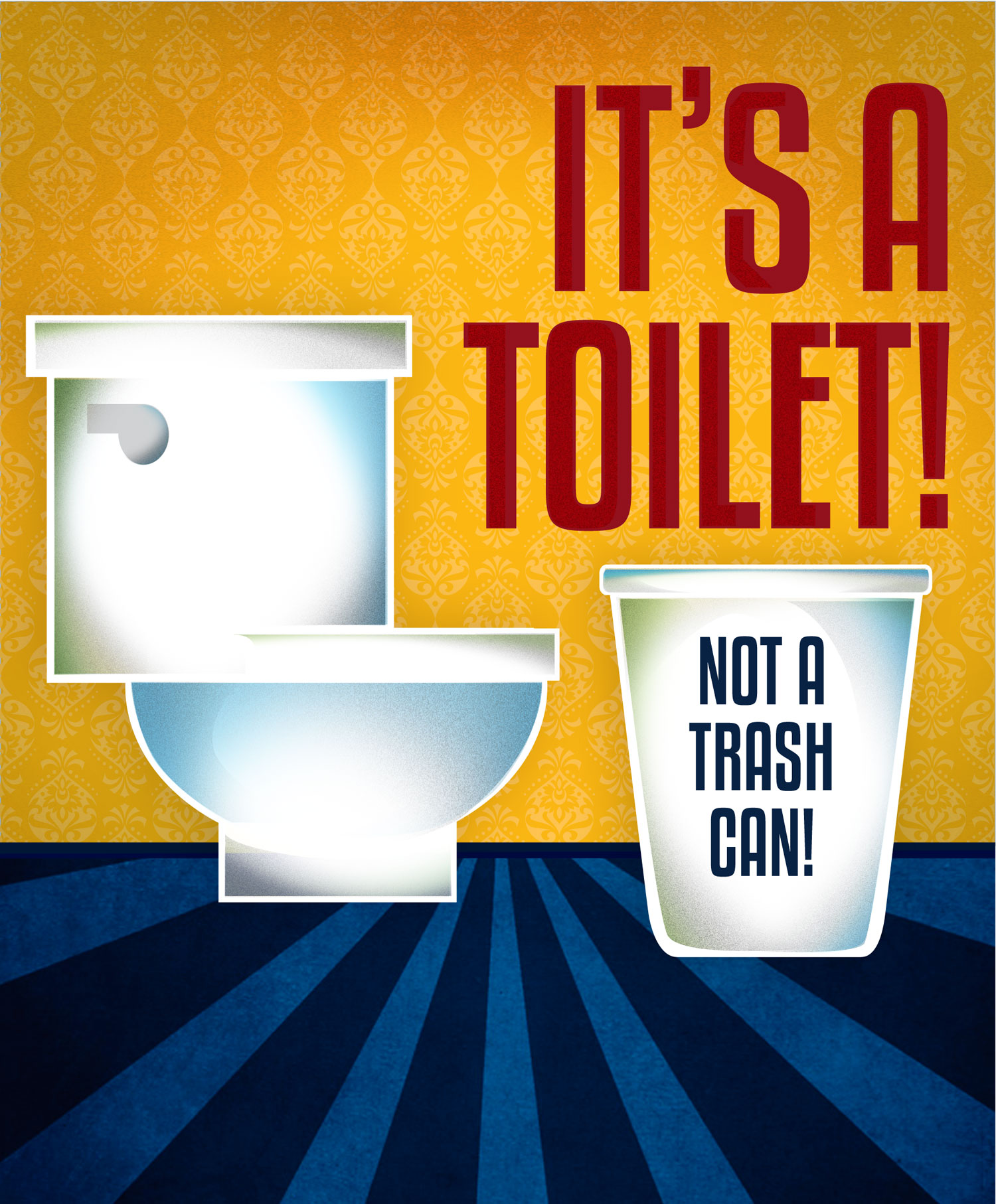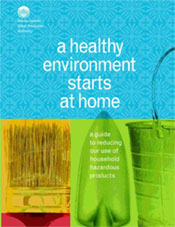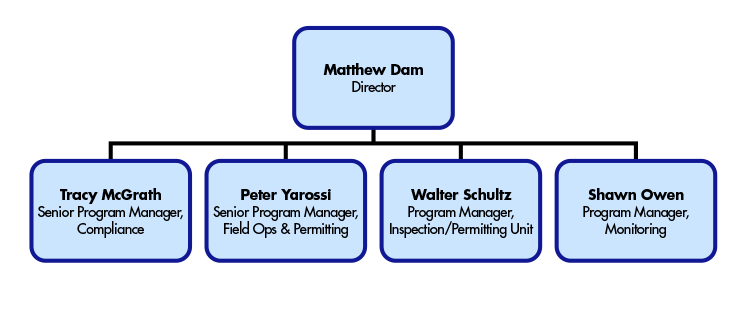Toxic Reduction and Control (TRAC)
Massachusetts Water Resources Authority
|
Toxic substances from homes, industries and storm runoff can cause serious problems if allowed to enter our sewer system uncontrolled. Even the most advanced wastewater treatment systems are not designed to treat and remove metals, petroleum, chemicals, and many organics; these pollutants must be addressed at their source. Excessive levels of such chemicals can limit MWRA's use of wastewater sludge as fertilizer, threaten the marine environment or hinder the treatment process.
To reduce toxic discharges at their source, TRAC administers MWRA's Industrial Pretreatment Program under the Federal Clean Water Act. TRAC regulates industrial dischargers in accordance with its Sewer Rules and Regulations (360 CMR 10.00) and works with industries to encourage voluntary reductions in their toxic chemical use.
Regulations
The following MWRA's regulations govern what can be discharged into the sewer system. The regulations must be approved by EPA, and published in the Massachusetts register. After the Secretary approves them, they become part of the "Code of Massachusetts Regulations" (CMR), which has the force of law
Please read our disclaimer before downloading.
- 360 CMR 1.00 - Adjudicatory Proceedings
- 360 CMR 2.00 - Enforcement and Administrative Penalties
- 360 CMR 10.00 - Sewer Use
Permit Applications
TRAC permit applications and instructions are available for download on our TRAC Permits page.
Incentive and Other Program Charges
In MWRA’s Toxic Reduction and Control Department established permitting and monitoring charges for all Sewer Use Discharge Permits (SUDPs). The charges are explained in the Sewer Use Regulations (360 CMR 10.101-10.104).
Household Hazardous Waste
Households are also an important source of toxic chemicals due to the careless dumping of toxic products down household drains. Using environmentally safe alternatives instead of many household chemical products is usually cheaper and as effective.
For information on where to take household hazardous wastes, contact your local Department of Public Works. MWRA's guide to household hazardous waste, A Healthy Environment Starts at Home, will help you identify products that could be a hazard and show you dozens of safe, nontoxic alternatives.
- To learn about MWRA's testing and analytical capabilities go to: Laboratory Services
Reports and Procedures
Industrial Pretreatment Program Sampling Procedures Protocol (PDF)
Significant Industrial Users in Significant Non Compliance for violations in FY23 (PDF)
Publications
- A Healthy Environment Starts at Home - MWRA's guide to household hazardous waste will help you identify products that could be a hazard and show you dozens of safe, non-toxic alternatives.
- Mercury in Dental Facilities - This study found that dental facilities are a significant source of mercury in the MWRA waste stream.
- Industrial Waste Report
TRAC submits an Industrial Waste Report to the EPA every October which reports on the progress of the Industrial Pretreatment Program from July 1 through June 30.
TRAC Organization and Contacts
Matthew Dam
Director
(617) 305-5633, matthew.dam@mwra.com
Tracy McGrath
Sr. Program Manager, Compliance
(617) 305-5647, tracy.mcgrath@mwra.com
Peter Yarossi
Sr. Program Manager, Field Ops & Permitting
(617) 305-5671, peter.yarossi@mwra.com
Walter Schultz
Regional Manager, Inspection/Permitting Unit
(617) 305-5665, walter.schultz@mwra.com
Compliance Coordinators and Industrial Coordinators by Municipality
Each municipality is assigned an Industrial Coordinator and a Compliance Coordinator.
Industrial Coordinators are responsible for inspecting and permitting to industrial users in that municipality. Contact List (PDF)
Compliance Coordinators are responsible for issuing Notices of Violation and overseeing escalated enforcement actions. Contact List (PDF)
Pretreatment Program and Federal Clean Water Act
Congress passed the Clean Water Act in part to set water quality standards for water bodies that receive effluent from sewage treatment systems. The Boston Harbor cleanup came about from a lawsuit by the cities of Boston and Quincy against the Metropolitan District Commission (MWRA's predecessor) for failing to comply with the Clean Water Act. MWRA was formed to bring Boston's metropolitan sewer system and Boston Harbor into compliance with a court order, a result of this lawsuit. The Clean Water Act also requires that businesses and industries that discharge into the sewer system be regulated through an industrial pretreatment program. TRAC administers the Industrial Pretreatment Program for the MWRA service area.
Frequently Asked Questions
How does TRAC oversee industries in MWRA's service area?
INDUSTRIAL COORDINATORS
Each community is assigned an Industrial Coordinator, who is the single point of contact for industrial users in that community. Each Industrial Coordinator serves on a team that is responsible for all of the permitted companies in its region. Industrial Coordinators review Sewer Use Discharge Permit applications, inspect facilities and develop a permit designed to ensure compliance with state and federal regulations. They also issue notices of violation to companies that violate their permits. Contact List (PDF)
SAMPLING ASSOCIATES AND COMPLIANCE COORDINATORS
In addition to Industrial Coordinators, each team has Sampling Associates responsible for monitoring the discharge of industrial facilities in their region, Compliance Coordinators are responsible for handling more significant industry violations, and a Regional Inspector responsible for inspecting gas/oil separators and septage facilities located in their region. Contact List (PDF)
How does TRAC regulate industry?
TRAC issues Discharge Permits to approximately 2,000 companies that discharge process industrial wastewater to the sewer system. There are several categories of permits issued depending upon the nature of a company's process and their potential to violate discharge regulations.
Permit Category |
Description |
1 |
A sewer user whose process results in a Discharge containing one or more substances in a concentration or quantity requiring Pretreatment to meet the requirements of 360 CMR 10.021 through 10.025 and who does not have a Group, General, or Combined Permit for the discharge. |
2 |
A sewer user whose process results in a Discharge containing one or more substances regulated by the 360 CMR 10.021 through 10.025 at a concentration or quantity not requiring Pretreatment to meet 360 CMR 10.021 through 10.025 and who does not have a Group, General, or Combined Permit for the Discharge. |
3 |
A sewer user whose process results in a Discharge not containing a substance regulated by 360 CMR 10.021 through 10.025 and who does not have a the MWRA and who does not have a Group, General, or Combined Permit for the Discharge. |
4 |
An SIU without an Industrial Waste Discharge to the Authority Sewerage System or any tributary thereto. |
6 |
A person with a Septage Discharge Permit. |
10 |
A person with a General Permit for Low Flow and Low Pollutant. |
12 |
A Person with a Temporary Construction Site Dewatering P, even if the Discharge might also meet the definition of another category. |
G1 |
A Person with a Group Permit for Photo Processing and Printing Operations. |
G2 |
A Person with a Group Permit for Food Processing. |
C1 |
A Person with a Combined General Permit for Low Flow and Low Pollutant and Group Permit. |
D1 |
A Person with a Group Permit for Dental Discharges. |
Significant Industrial Users (SIUs) are defined by EPA, and receive the greatest amount of oversight. Companies in categories 1-4 can be designated as SIUs if they meet the criteria.
How does MWRA determine the allowable discharge limits for industries in the service area?
MWRA develops local limits for each pollutant of concern. These local limits are generally a concentration-based limit (i.e. expressed in milligrams per liter) which are applied equally to all sewer users. Each of these limits are included as requirements in TRAC's industrial discharge permits. Local limits are required to ensure that industrial discharges do not result in the pass-through or interference of pollutants within a wastewater treatment plant. They are also developed to protect the infrastructure and workers within the treatment plant, and ensure that treatment plant effluent and biosolids do not exceed applicable federal and state water quality and biosolids criteria.
MWRA is required to reevaluate its local discharge limits whenever we receive a new discharge (NPDES) permit is issued for our treatment plants, or every five years. This review is needed to account for changes in the nature of the influent to the treatment plant as well as modifications and improvements in plant treatment processes.
How are TRAC's costs recovered?
TRAC's incentive and other charges program is designed to provide a financial incentive to companies to reduce the types and amount of toxics in their discharge and to help MWRA recover the costs of the program. The two part charge consists of the following:
- The permitting charge, which covers the cost of staff time in inspecting a facility and writing the permit and is determined by the company's category which in turn is determined by the volume of the company's flow to the sewer, and its potential impact on the sewer system.
- The monitoring charge, which is directly linked to the constituents of the company's discharge.
A company can reduce its monitoring charge by reducing the volume of certain constituents of its discharge. SIUs require the greatest amount of oversight and have the highest potential to violate regulations, so their charges are high; group and general permits require a minimal level of staff effort to issue, and therefore have the lowest permit charges.
Which pollutants create the most concern for TRAC?
Pollutant |
Reason for Concern |
TRAC/MWRA Control Effort |
Molybdenum |
Molybdenum is a metal which is commonly used as a corrosion inhibitor in industrial, commercial, and residential cooling towers, and has been measured at elevated levels during the cooling season in MWRA fertilizer pellets. While these levels are well below current federal standards, they exceed the Mass. DEP highest-quality levels for unrestricted land application. |
TRAC has been working on a voluntary program with suppliers of corrosion control chemicals to switch their corrosion control agents containing molybdenum to those that do not contain them. To date, this program has helped reduce molybdenum influent levels by approximately 40% since 1995. |
Mercury |
Mercury is a heavy metal which (in certain chemical forms) can be highly toxic and is known to bioaccumulate (build up) in fish and (potentially) humans and marine mammals who consume these fish. While mercury is found in very small amounts in a number of products, MWRA has identified hospitals, dental facilities (using dental amalgams) and several commercial and household products (cleaners and disinfectants) as key sources to our system. Mercury also is contributed in significant amounts by rain events, through atmospheric deposition of mercury which is released as a result of municipal incinerators and fossil fuel plants. |
TRAC has been working with known mercury sources on a variety of programs, including extensive research with Boston- area hospitals on pretreatment options and control options for mercury disposal and control in hospital facilities. In addition, a pollution prevention outreach program to test systems that collect and recycle dental amalgam is being implemented. MWRA is also working nationally with other city wastewater treatment plants to address the mercury sources found in many commonly used industrial and commercial products, through education and outreach. |
Copper |
Copper levels in MWRA's fertilizer pellets have sometimes exceeded the most-stringent state standards for reuse. Because MWRA's water supply is somewhat corrosive to water pipes, copper is leached from residential and other service pipes, eventually ending up in MWRA's wastewater. Copper can also be contributed through improper treatment and discharge of vehicle washing and cleaning activities. It is also found in many commercial and industrial chemicals, such as root-killers and paint pigments. |
MWRA has undertaken a multi-pronged effort to address copper. Current actions include: Increased sampling of industrial permittees for copperOptimized corrosion control of the water supply Testing of currently unregulated sources (e.g. car washes, boilers, cooling towers) to determine copper levels and (if necessary) additional regulatory controls |
Lead |
Lead is a heavy metal which has been found in MWRA pellets at concentrations which sometime exceed the Mass. DEP's most stringent standards for reuse. Lead, like copper, is commonly used in older residential and service pipes, and is thus susceptible to leaching into the water supply. Lead may also be contributed from storm water runoff as well as some types of metal processing operations. |
TRAC decreased the allowable limit for industrial dischargers from 0.4 mg/l to 0.2 mg/l in 1992, and MWRA Waterworks Division installed an Interim Corrosion Control Facility in 1997. At this facility, Sodium Carbonate (Soda Ash) and CO2 (Carbon Dioxide) are added to increase the water's buffering capacity. MWRA has also adjusted the pH of the water. These changes are helping to reduce the lead levels found in tap water (and eventually discharged to Deer Island). |
PCBs |
EPA and the National Marine Fisheries Service (NMFS) have expressed concern that PCBs (polychlorinated biphenyls) can harm fisheries and marine mammals. Current levels of PCBs in Mass Bay exceed EPA human health criteria. As a result, PCBs are a key focus of the proposed new discharge permit for the Deer Island Treatment Plant, and TRAC has prepared a pollution prevention (P2) plan to control and reduce the amounts of PCBs discharged to the sewer. This plan is under review by EPA and DEP. |
MWRA currently prohibits the discharge of PCBs, and these pollutants are not generally found in any current industrial processes. Although Deer Island influent sampling generally does not detect PCBs, they are assumed to be contributed through contaminated groundwater and storm water runoff. (EPA estimates that 85% of the PCB loading to Mass Bay comes from atmospheric deposition.) TRAC's P2 plan is expected to focus on cooperative efforts to find groundwater sources to the MWRA sewer and a sampling program to ensure that potential commercial and industrial sources are adequately controlled. |
What methods does TRAC use to reduce discharges of toxics?
TRAC has primarily used a individual, regulatory approach to address toxics through a combination of issuing permits, inspecting facilities, sampling their wastestreams, and taking any needed enforcement actions. These actions can range from informal notices of violation for initial violations, to penalty assessments and/or permit revocation for drastic and unlawful violation of MWRA discharge limits. This individual permit approach has been very effective in reducing the majority of industry's pollutant loads, and continues to be TRAC's primary mission.
However, there are some large groups of sewer users who discharge low volumes individually, but can contribute, as a group, considerable pollutant loadings. The sheer number of these facilities make it difficult and inefficient to permit individually. For example, research has shown that the majority of molybdenum in our system comes from a corrosion control agent used in air conditioning cooling towers in residential, commercial and industrial buildings. There are approximately 10,000 such facilities in operation in the MWRA district.
Rather than permit these facilities individually, TRAC is working with these facilities and the companies that supply the corrosion control agent to switch to an agent that does not contain molybdenum.
TRAC is working on a variety of control strategies to reduce their contribution of toxics to the sewer system. TRAC is encouraged by the early efforts on the part of all these groups to cooperate in this effort. The benefit of this approach is that TRAC can provide a more comprehensive approach to toxics control (using both regulatory and non-regulatory methods) for a greater number of sewer users in the MWRA service area.
PDF files on this site require Adobe Acrobat Reader®. Free download.
Updated July 31, 2024


